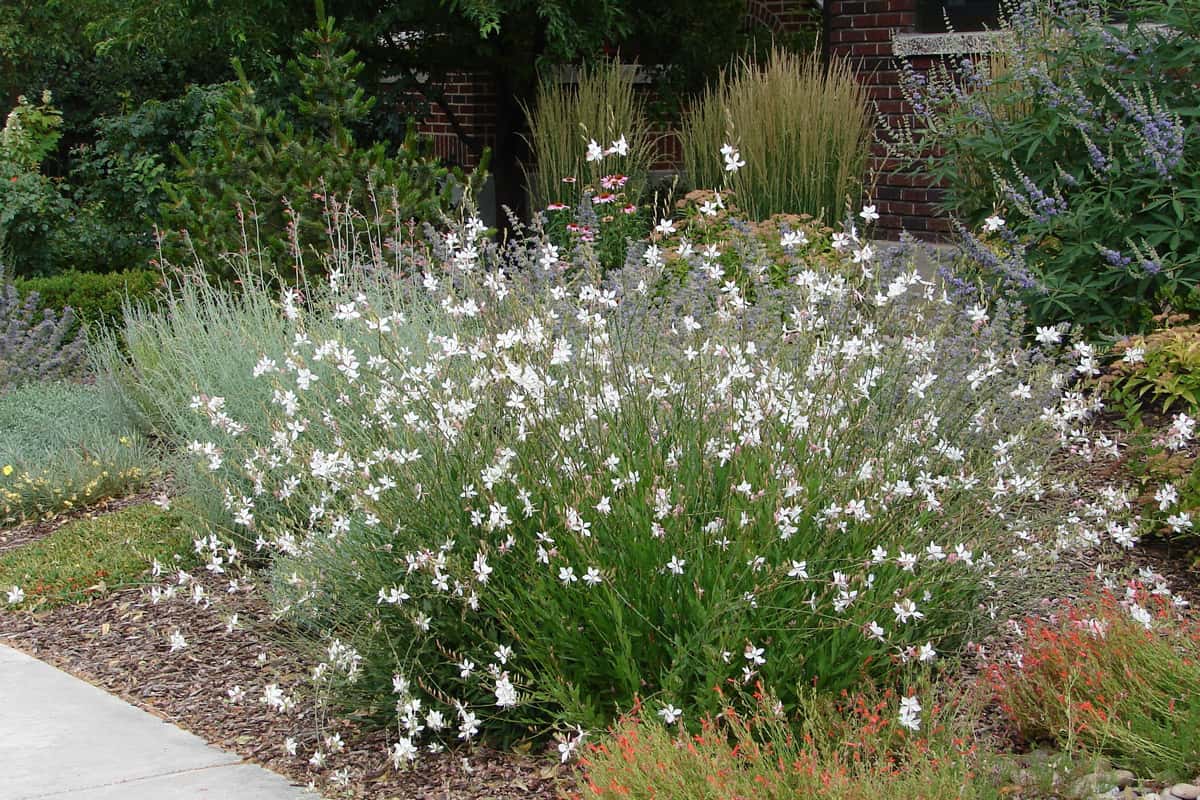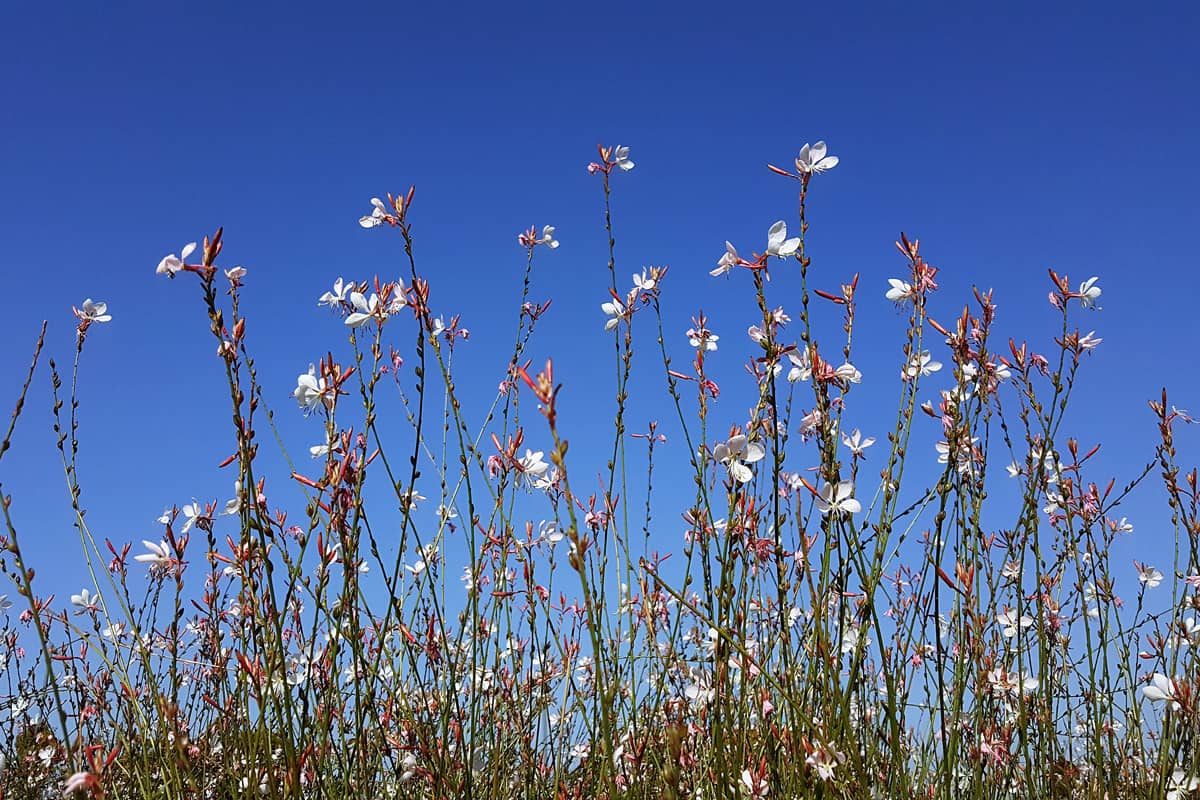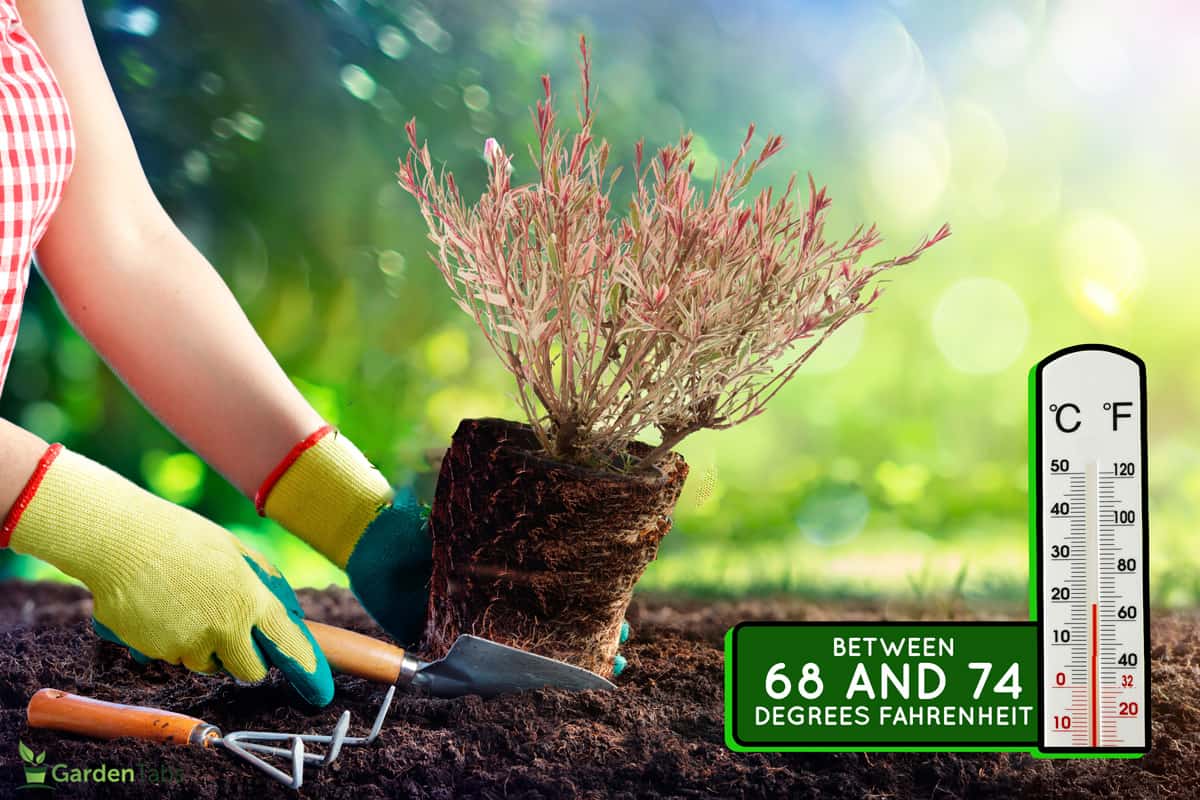If you grow gaura in your garden, you may be wondering how to take care of it during winter. Fortunately, we have done some research on this topic, and here is what we found.
There are many ways to care for gaura in winter. Here are some of them:
- Get rid of nearby dead plants
- Remove dead stems
- Pull up invasive weeds
- Add more nutrients
- Replenish the mulch
When given the appropriate attention and care, gaura plants can thrive during winter. We've provided a detailed gaura winter care guide for you. Sit tight and keep reading to learn more.
How To Care For Gaura During Winter

With extra care, your gaura can withstand harsh winter conditions. These are the ways to care for your gaura during winter:
Get Rid Of Dead Plants
Even though some dead plants can be left in place to degrade and give nutrients to the soil, you should be aware that certain plants may hold diseases, pests, and funguses.
Throughout the growing season, if you observed any signs of disease in your plants but didn't act, you should get rid of the diseased plants during the winter.
However, you can leave some leftover vegetation in the garden to decompose. Decomposing plant matter can help lower the risk of erosion and may serve as a habitat for pollinators that stay active throughout the colder months.
Remove Dead Stems
During the cooler times of the year, your gaura will be dormant. The plant won't die, but it will have reduced leaf and stem growth. Although the plant is dormant, it is preparing for warmer spring weather.
Take advantage of the plant's dormancy while it lasts and get one last round of pruning done on the dead stems. This will help the plant look presentable and prepares it for dormancy over the winter.
Pull Up Invasive Weeds
It is possible for invasive weeds to take over your gaura. You'll need to take action against these renegades. They should be dug up and thrown away or buried beneath a tarp or garden cloth so that they don't come back.
Resist the temptation to simply move invasive weeds to another region of your garden because they will most likely continue to grow there.
The only way for you to stop invasive weeds from growing and interfering with the growth of gaura flowers next spring is to entirely remove those plants from the area.
Add More Nutrients
Even though most people wait until spring to perform this task, the fall is an excellent time to amend the soil with organic fertilizers, bone meal, kelp, and rock phosphate. You can also add manure and compost.
If you add nutrients during winter, they will have time to start decomposing, which will enrich your soil and make it more biologically active.
You should mulch the soil when you are done making the amendments to keep them from getting washed away by the winter rains.
Replenish Mulch Periodically
Mulching in the wintertime offers the same advantages as mulching in the summertime. It prevents the soil from eroding and controls the growth of weeds.
There are additional advantages to winter mulching. The gaura is vulnerable to damage from frost, and the transition from fall to winter can be made more manageable when you cover the soil's surface with a substantial layer of mulch.
This helps to maintain a consistent temperature and level of moisture in the soil. It also protects it from severe frosts and helps the plant live longer. Another advantage of mulch is that when it decomposes, new organic material is added to the soil.
If you perform the actions outlined above, you will find that spring and summer go more easily and that the health and growth of your gaura will be improved for the long run.
When To Prune Gaura
Many garden plants benefit from pruning, but it is essential to prune at the appropriate time of year and in the right manner. You should prune your gaura plant in the fall so that it's ready for winter. This will promote vigor so the gaura will produce more flowers.
Also, pruning keeps the plants from outgrowing their allotted space. Over time, gaura can grow to be quite large and unproductive, so it is a good idea to prune them.
The practice of pruning may also assist in limiting or preventing the spread of illness that may put the gaura at risk.
How Cold Hardy Is Gaura?

Gaura plants are not completely cold hardy, which is a disadvantage. Gauras are usually hardy in zones 5-8. However, temperatures lower than 14 degrees Fahrenheit and excessive moisture can damage the root ball of this plant.
Wetness at temperatures below -15 degrees Fahrenheit is also dangerous for these plants. The gaura can be grown as a perennial. However, it doesn't have the longevity of really hardy perennials.
To increase their longevity, prune your gaura in the fall so that it is about four inches above the ground and cover the exposed top with leaves and vegetation. This will ensure that it survives the winter. Doing this supplements the lack of cold hardiness and helps to protect against moisture.
Another detail that can affect the gaura plant is the nature of where it is planted. One of the most important factors that will determine whether your gaura will live through the winter is whether or not the site has adequate drainage.
What Are The Best Conditions For Growing Gaura?

The gaura is a low-maintenance plant that thrives with only a minimal amount of care and attention on a regular basis. With the right soil, light, and watering conditions and the proper temperature, your gaura should thrive.
Soil
The soil has to have good drainage because the flowering plant can't survive in soggy areas. Gaura should be planted in raised beds or in the soil with compost and fertilizers. The plants should be spaced at least 12 inches apart and planted in clusters of three to five for optimum effect.
Light
You should plant your gaura in a sunny location with plenty of space for its long, feathery stems and showy white or pink flowers.
The gaura requires full sun in order to develop and bloom to its greatest potential, but it can withstand some afternoon shadow, particularly in hot areas.
Watering
The gaura doesn't need regular watering because soggy soil can be detrimental to its growth. You should water your gaura occasionally but well to encourage the development of strong roots.
Temperature And Humidity

The gaura has resistance to both high temperatures and low temperatures, so it can be grown in a wide variety of climates and conditions.
For best performance, wherever you decide to plant your gaura, make sure the temperature stays between 68 and 74 degrees Fahrenheit.
How Long Does A Gaura Plant Last?

The gaura plant will bloom and last for a period that is longer than other types of perennials, which is one of its most attractive qualities.
Most blooms open during the first few weeks of summer, but you may anticipate further flowering throughout the rest of the season and even into the fall. The gaura will flower and have long stems that sway in the wind, giving the appearance of butterflies soaring through the air.
To Wrap Up
The survival of your gaura plant during winter depends on how you care for it. You will need to remove any dead plants that are around it, get rid of dead stems, and pull up invasive weeds. You should also add nutrients and replenish the mulch periodically.
If you enjoyed reading this post, here are similar articles you may like:
Lavender In Planters: Complete Guide To Care
